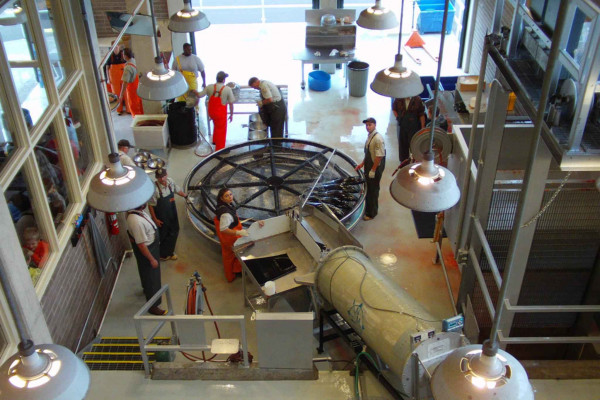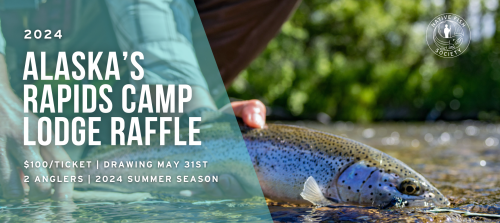Hatchery Basics:
Hatchery Reform:
Despite a century and a half of use, fish hatcheries (hereafter referred to as fish factories) remain an unproven method to sustain the viability and biodiversity of native fish populations, preserve the culture of commercial and recreational fishing, and uphold treaty obligations and subsistence fishing for indigenous peoples and sovereign nations. There is an overwhelming scientific consensus that fish factories have a myriad of direct negative consequences for fish including infrastructural, ecological, and genetic impacts, although these categories interact considerably. There is also a growing public awareness of the indirect impacts fish factories cause within the socio-ecological interface within watersheds and socio-economic dimensions of fisheries. The aesthetic and emotional state of communities who are impacted by factory fish and the ways in which fish factories detract from the protection of the natural environment also threaten the recovery and protection of wild fish throughout the Pacific Northwest. The artificial production of fish has become the latest in a long line of threats (think, poor logging practices, dams) to native fish.
Infrastructural impacts
Infrastructural impacts arise from the captive rearing of fish in a factory setting including the (a.) physical location of the facility, (b.) operation and resource consumption of the facility, (c.) potential for general facility failure, and (d.) demographic and collection impacts.
Infrastructural impacts are often assumed to be offset through investments in equipment or changes in artificial propagation procedures. However, the physical existence of the factory represents a permanent, negative impact on the surrounding environment and can also pose serious harm to fish populations both in and outside of the facility. In addition, the cost it takes to offset these impacts into the indefinite future is always greater than the cost of restoring watershed function and further delays investment in the root causes of decline for natural fish.
Ecological Impacts
Ecological impacts occur on an inter and intraspecies basis both inside and outside the artificial production facility. Ecological interactions occur whether or not inter-breeding occurs and are magnified if resident life histories are being produced. Ecological impacts include: a.) disease, b.) competition, c.) behavioral modification, and d.) marine derived nutrients. Review papers by Pearsons (2008) and Kostow (2009) document numerous, serious, negative ecological consequences as a direct result of the artificial propagation of fish.
Overall, the ecological risk of artificial propagation is the replacement of wild fish by factory fish (Hilborn & Eggers 2000). When fish produced through artificial production interact with wild fish in a limited carrying capacity, factory fish may replace rather than augment wild populations (Hilborn 1992).
Genetic Impacts
Wild fish throughout the Northwest are defined by their sense of place, or their high fidelity to return to their birthplace. Their ability to migrate to the ocean and return to their natal stream has profound implications on population structure and has encouraged fine scale genetic adaptations to specific habitats used throughout their lifecycle and geographic range. The genetic risks that artificial propagation poses to wild populations can be broken down into: a.) loss of genetic variability, b.) outbreeding and inbreeding effects, c.) domestication selection and e.) Epigenetic Impacts. These genetic effects are caused by removing the ability of natural mate selection when gametes are artificially inseminated in the factory.
Indirect impacts
Because factory fish intersect considerably with naturally produced fish, they also pose indirect impacts from activities and decisions stemming from their presence. These impacts include: Direct and Indirect take through fisheries, Monitoring, and Opportunity costs.
Environmental Justice
Environmental Justice and its principles (Taylor 2000) has been largely ignored while considering the impacts of artificial production programs as related to fish. One example of this is the apparent role such programs play facilitating and justifying the continued degradation of the natural environment and control of minority peoples. Fish factories concentrate power within limited government systems (agencies, decision making processes, and knowledge banks). The condensed number of voices deciding on these issues continue to reinforce the status quo without regard to other interests and perspectives- those of which would both alleviate pressures on the environment as well as open enjoyment and use of public resources to more than than the few elite. The current rhetoric maintains that fisheries are not possible without continued factory operation.
The artificial production of fish has been politically safe and funding assured. Fish factories are funded mainly with federal (that is, taxpayer’s) dollars and by private utilities (taxpaying rate payers) mitigating hydropower dam construction. Without this funding there would be very few hatchery programs. Today, however, the realization that artificial production does not solve problems faced by ESA-listed salmonids is beginning to seep into the public’s consciousness and it is quickly ending as an easy political default. When it costs thousands of dollars to produce a single adult salmon for harvest, even politicians are noticing.
Perhaps that isn’t such a bad idea when one considers the growing and overwhelming body of peer-reviewed science which inarguably now concludes hatcheries are deleterious to and contribute to the decline of wild, native salmonids.
Additional Resources:
For more information on the above impacts in peer reviewed scientific papers, please check out the bibliography below: To read excerpts from the science click here. If you know of a public comment opportunity, or other forum that this work can be used in, all are welcome to use this knowledge. An updated, more detailed, open source tool for advocacy can be found by following this link

